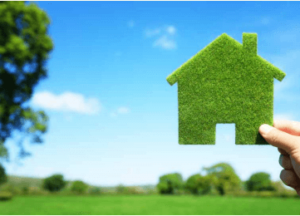In the next three years, developers expect 60 percent of their projects will be green.
The market for green construction projects has grown significantly in the last 10 years and demand for green building activity is poised to grow substantially — to double in some regions, according to a report issued December 2018 by Dodge Data & Analytics. In fact, the report found a 20-point projected jump among those who report currently having a majority of green projects.

“As the world’s largest provider of building technologies, we’ve seen the shift toward more efficient, sustainable buildings,” says Chris Nelson, President, Commercial HVAC for Carrier, premier sponsor of the study. “The fact is, green buildings provide a triple win – delivering measurable benefits for building owners, occupants and the public from reduced operating costs, improved indoor air quality and reduced energy consumption. The trends uncovered in this report reflect what we’re seeing in our business – building green is good for the public health, the environment, and the bottom line.” Not to mention the tax credits that are frequently available and, it could be said, the enhanced social status.
Similar benefits were reported for green building retrofits and renovations. “Retrofitting buildings is critical to meeting our carbon-neutral goals,” said American Institute of Architects (AIA) 2018 President Carl Elefante. “This data shows that not only is it good for our planet, but it can also mean an operating cost savings of almost ten percent in the first few years. While that may serve some motivational value, greater incentives and improved policies are necessary in the United States and beyond to make the meaningful building retrofits that we need a reality.”
While it’s impossible to quantify the extent to which improvements in any of these areas tend to reduce insurance costs, there can be little doubt that there would be higher costs as a consequence of NOT having these improvements. Business interruptions can be minimized when dependency on the electrical grid is reduced. To what extent does poor indoor environmental quality create workers compensation problems, let alone end up costing employees more for health insurance?
Also, studies show that worker productivity can be significantly impacted by implementing green building design features such as improved lighting, reduction of pollutants, advanced ventilation systems and the use of non-toxic building materials.
Cost has been a challenge though. Green buildings typically cost more to build and therefore require higher insurance valuations. Some companies do offer discounts on green buildings and, as mentioned, there are frequently tax credits available.
The good news is that the Dodge Data & Analytics Report found the perception that green buildings cost more than traditional construction has dramatically declined from over three-quarters in 2012 to under half today.
Similarly, other studies have also shown that over a 20-year life period, some green buildings have yielded $53 to $71 per square foot back on investment. In addition, studies of the commercial real estate market have found that LEED and Energy Star certified buildings achieve significantly higher rents, sale prices and occupancy rates as well as lower capitalization rates potentially reflecting lower investment risk.
If you’re thinking of building or retrofitting a building to be green, please contact us. We’ll help you put together an insurance program to optimize your planning.
